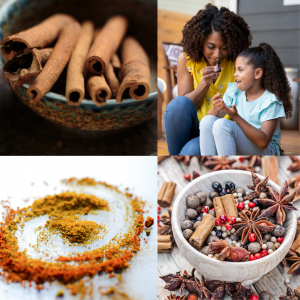
In my previous article, I highlighted the many varieties of the sweet spice of cinnamon, focusing on the two most popular, Ceylon and Cassia. I discussed the blood sugar, cardiovascular, and immune benefits that they both share. I also pointed out how their different chemical makeups, and their accompanying essential oils, can impact their usage.
In my most recent post on cinnamon and cassia, I discuss the cautions with cassia that are important to be aware of.
Topics include:
- Why we want to be mindful, though not frightened, of coumarin.
- The anticoagulant (blood-thinning) and liver precautions associated with Cinnamonum cassia due to its coumarin content.
- The bottom line on dosing cinnamon cassia and who may want to avoid this spice variety altogether.
Although we need to be aware to not be heavy handed with the essential oil or spice bottle, there are many wellness reasons to still consider cassia cinnamon.
Click here to read more.
Learn How Naturopathic Medicine Can Support Your Health.

Specializing in Mental and Emotional Health, Women’s Health, and Digestive Health
Click here to discover more.
Access my free two-part video series on essential oils for brain, mood, and hormonal balance!
This material is for information purposes only and is not intended to diagnose, treat, or prescribe for any illness. You should check with your doctor regarding implementing any new strategies into your wellness regime. These statements have not been evaluated by the FDA. (Affiliation link.)
According to experts and the World Health Organization (WHO), there is no approved standard of care treatment, cure, or preventative for COVID-19. Supportive measures and containment are in full force as a result. Please see the CDC website and your state’s website for more information and updates. They also state when to contact your physician related to symptoms and travel history, exposures.
Disclaimer: This information is applicable ONLY for therapeutic quality essential oils. This information DOES NOT apply to essential oils that have not been tested for purity and standardized constituents. There is no quality control in the United States, and oils labeled as “100% pure” need only to contain 5% of the actual oil. The rest of the bottle can be filled with fillers and sometimes toxic ingredients that can irritate the skin. The studies are not based solely on a specific brand of an essential oil, unless stated. Please read the full study for more information.
Thanks Canva and Pixabay.



